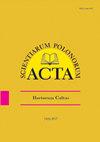大霉素对桔梗盆栽生长和开花的影响
IF 0.7
4区 农林科学
Q4 HORTICULTURE
引用次数: 0
摘要
达米诺齐特(B-Nine)是一种植物生长调节剂,从叶子转移到茎上,以避免伸长,并产生更紧凑的植物和均匀的生长和活力。尽管具有巨大的市场潜力,但对利西雅的栽培来说,有关其应用的信息很少,因此本研究的目的是评估达米诺齐特对盆栽利西雅营养生长和开花的影响。在苗圃条件下,将粒化的李籽发芽并移植到花盆中。达氨酰肼实现了三次叶面应用;在营养期施用两次,在开花期施用一次,分别添加三种浓度(0.5、1.0和1.5 ml L-1),并在营养期和开花期用水作为对照。1.0和1.5 ml L–1的达米诺齐特施用量对李仙桃的营养发育最为有利(株高–15 cm,节间大小–2.5 cm,分枝数–3,叶宽和叶长–3 cm和6.5 cm),而0.5 ml L–1的剂量对所有开花阶段都是有利的(开花初期-182粒纽扣,萼片闭合且大于花瓣-53),可见花瓣大于萼片-25,开花和完全开花–每株3朵花)。基于这些结果,建议在花盆中施用低浓度(0.5和1 ml L–1)的B-Nine来开发Lisianthus。本文章由计算机程序翻译,如有差异,请以英文原文为准。
EFFECT OF DAMINOZIDE ON THE GROWTH AND FLOWERING OF Eustoma grandiflorum PROPAGATED IN POTTED
Daminozide (B-Nine) it is a plant growth regulator, is translocated from the leaves to the stem to avoid elongation and produce more compact plants and uniform growth and vigor. For the cultivation of Lisiathus the information of the damonizide application is scarce despite of great marketing potential, so the objective of this study was to evaluate the effect of daminozide on the vegetative growth and flowering of Lisianthus grown in pot. Granulated Lisianthus seeds were germinated and transplanted into pots under nursery conditions. Three foliar applications of daminozide were realized; two applications in vegetative stage and one in flowering, adding three concentrations in each of them (0.5, 1.0 and 1.5 ml L–1) were used and water was applied as a control during the vegetative and flowering phases. The applications of daminozide at 1.0 and 1.5 ml L–1 were optimal for the vegetative development in Lisianthus (plant height – 15 cm, size of the internodes – 2.5 cm, number of branches – 3, width and length of the leaves – 3 cm and 6.5 cm), while the dose of 0.5 ml L–1 was favorable for all flowering stages (beginning of flowering – 182 buttons, sepals closed and larger than the petals – 53), visible petals larger than the sepals – 25, floral opening and full flowering – 3 flowers per plant). Based on these results, the application of B-Nine at low concentrations (0.5 and 1 ml L–1) is recommended for the development of Lisianthus in pots.
求助全文
通过发布文献求助,成功后即可免费获取论文全文。
去求助
来源期刊
CiteScore
1.30
自引率
14.30%
发文量
61
审稿时长
4-8 weeks
期刊介绍:
In Acta Scientiarum Polonorum Hortorum Cultus we publish original research papers and review articles containing new and significant information on broad aspects of horticulture and related disciplines. The papers are published in English only, in six issues yearly.

 求助内容:
求助内容: 应助结果提醒方式:
应助结果提醒方式:


